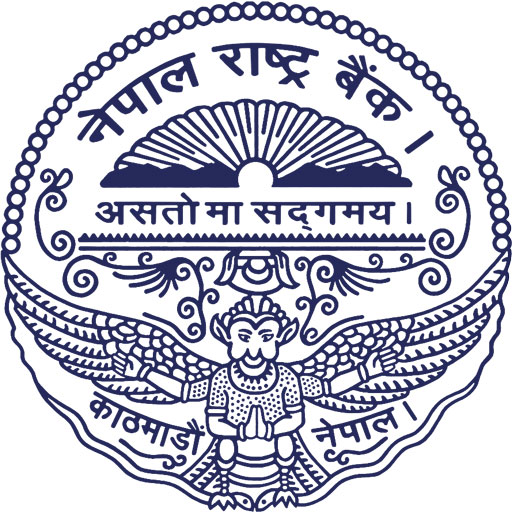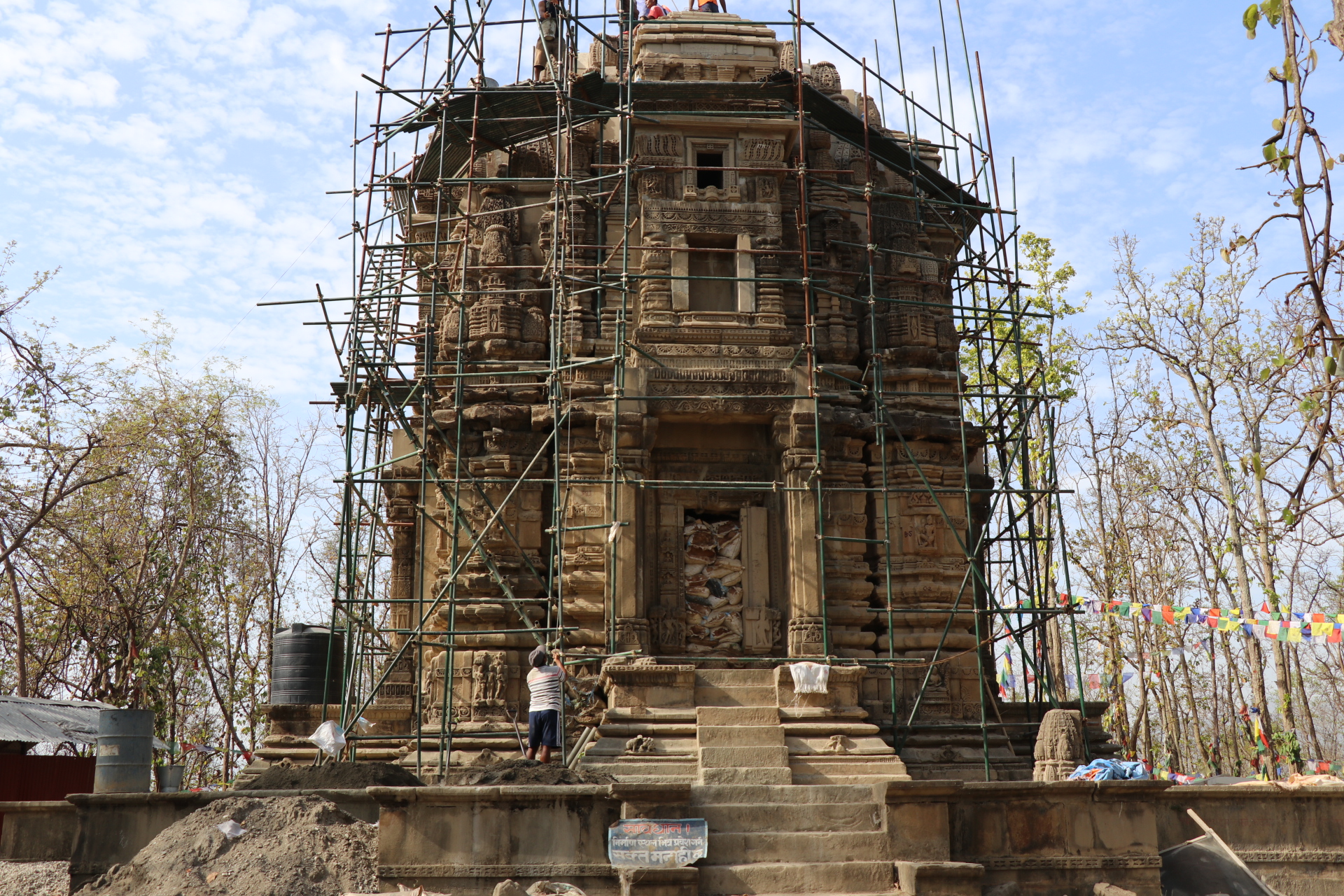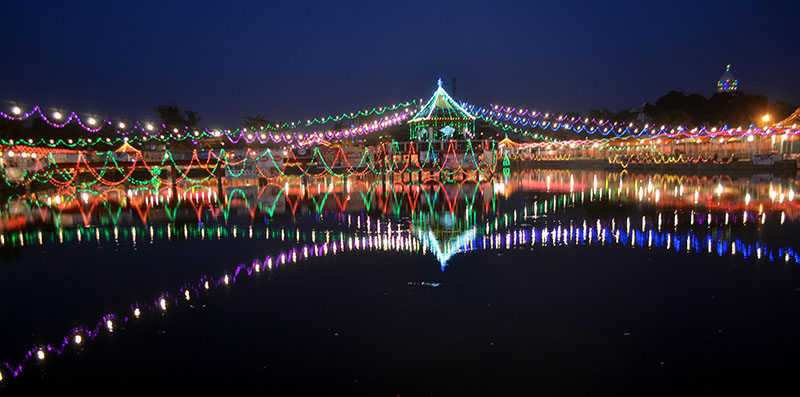|
Nepal Rastra Bank
The Nepal Rastra Bank (NRB) ( ne, नेपाल राष्ट्र बैंक) was established April 26, 1956 A.D. (Nepali Date: Baisakh 14, 2013 B.S.) under the Nepal Rastra Bank Act, 1955, to discharge the central banking responsibilities including guiding the development of the embryonic domestic financial sector. As of now, the NRB is functioning under the new Nepal Rastra Bank Act, 2002. functions of NRB are to formulate required monetary and foreign exchange policies so as to maintain the stability in market prices, to issue currency notes, to regulate and supervise the banking and financial sector, to develop efficient payment and banking systems among others. The NRB is also the economic advisor to the government of Nepal. As the central bank of Nepal, it is the monetary, supervisory and regulatory body of all the commercial banks. development banks, finance companies and micro-finances institutions. The central office is located in Baluwatar, Kathmandu and it has ... [...More Info...] [...Related Items...] OR: [Wikipedia] [Google] [Baidu] |
Seal Of The Nepal Rastra Bank
Seal may refer to any of the following: Common uses * Pinniped, a diverse group of semi-aquatic marine mammals, many of which are commonly called seals, particularly: ** Earless seal, or "true seal" ** Fur seal * Seal (emblem), a device to impress an emblem, used as a means of authentication, on paper, wax, clay or another medium (the impression is also called a seal) * Seal (mechanical), a device which helps prevent leakage, contain pressure, or exclude contamination where two systems join Arts, entertainment and media * Seal (1991 album), ''Seal'' (1991 album), by Seal * Seal (1994 album), ''Seal'' (1994 album), sometimes referred to as ''Seal II'', by Seal * ''Seal IV'', a 2003 album by Seal * ''Seal Online'', a 2003 massively multiplayer online role-playing game Law * Seal (contract law), a legal formality for contracts and other instruments * Seal (East Asia), a stamp used in East Asia as a form of a signature * Record sealing Military * ''Fairey Seal'', a 1930s British ... [...More Info...] [...Related Items...] OR: [Wikipedia] [Google] [Baidu] |
Nepali Date
Vikram Samvat (IAST: ''Vikrama Samvat''; abbreviated VS) or Bikram Sambat B.S. and also known as the Vikrami calendar, is a Hindu calendar historically used in the Indian subcontinent. Vikram Samvat is generally 57 years ahead of Gregorian Calendar, except during January to April, when it is ahead by 56 years. Alongside Nepal Sambat, it is one of the two official calendars used in Nepal. In India, it is used in several states. The traditional Vikram Samvat calendar, as used in India, uses lunar months and solar sidereal years. The Nepali Bikram Sambat introduced in 1901 CE, also uses a solar sidereal year. History A number of ancient and medieval inscriptions used the Vikram Samvat. Although it was reportedly named after the legendary king Vikramaditya, the term "Vikrama Samvat" does not appear in the historical record before the 9th century; the same calendar system is found with other names, such as Krita and Malava. In colonial scholarship, the era was believed to be base ... [...More Info...] [...Related Items...] OR: [Wikipedia] [Google] [Baidu] |
Indian Rupee
The Indian rupee ( symbol: ₹; code: INR) is the official currency in the republic of India. The rupee is subdivided into 100 ''paise'' (singular: ''paisa''), though as of 2022, coins of denomination of 1 rupee are the lowest value in use whereas 2000 rupees is the highest. The issuance of the currency is controlled by the Reserve Bank of India. The Reserve Bank manages currency in India and derives its role in currency management on the basis of the Reserve Bank of India Act, 1934. Etymology The immediate precursor of the rupee is the ''rūpiya''—the silver coin weighing 178 grains minted in northern India by first Sher Shah Suri during his brief rule between 1540 and 1545 and adopted and standardized later by the Mughal Empire. The weight remained unchanged well beyond the end of the Mughals until the 20th century. Though Pāṇini mentions (), it is unclear whether he was referring to coinage. ''Arthashastra'', written by Chanakya, prime minister to the first Maurya ... [...More Info...] [...Related Items...] OR: [Wikipedia] [Google] [Baidu] |
Reserve Bank Of India
The Reserve Bank of India, chiefly known as RBI, is India's central bank and regulatory body responsible for regulation of the Indian banking system. It is under the ownership of Ministry of Finance, Government of India. It is responsible for the control, issue and maintaining supply of the Indian rupee. It also manages the country's main payment systems and works to promote its economic development. Bharatiya Reserve Bank Note Mudran (BRBNM) is a specialised division of RBI through which it prints and mints Indian currency notes (INR) in two of its currency printing presses located in Nashik (Western India) and Dewas (Central India). RBI established the National Payments Corporation of India as one of its specialised division to regulate the payment and settlement systems in India. Deposit Insurance and Credit Guarantee Corporation was established by RBI as one of its specialised division for the purpose of providing insurance of deposits and guaranteeing of credit facilit ... [...More Info...] [...Related Items...] OR: [Wikipedia] [Google] [Baidu] |
London
London is the capital and largest city of England and the United Kingdom, with a population of just under 9 million. It stands on the River Thames in south-east England at the head of a estuary down to the North Sea, and has been a major settlement for two millennia. The City of London, its ancient core and financial centre, was founded by the Romans as '' Londinium'' and retains its medieval boundaries.See also: Independent city § National capitals The City of Westminster, to the west of the City of London, has for centuries hosted the national government and parliament. Since the 19th century, the name "London" has also referred to the metropolis around this core, historically split between the counties of Middlesex, Essex, Surrey, Kent, and Hertfordshire, which largely comprises Greater London, governed by the Greater London Authority.The Greater London Authority consists of the Mayor of London and the London Assembly. The London Mayor is distinguished fr ... [...More Info...] [...Related Items...] OR: [Wikipedia] [Google] [Baidu] |
Asian Clearing Union
The Asian Clearing Union (ACU) was established on December 9, 1974, at the initiative of the United Nations Economic and Social Commission for Asia and the Pacific (ESCAP). The primary objective of ACU, at the time of its establishment, was to secure regional co-operation regarding the clearing of eligible monetary transactions among the members of the Union to provide a system for clearing payments among the member countries on a multilateral basis. Objectives * To facilitate settlement of payments on a multilateral basis, * To promote the use of participants' currencies, * To promote monetary co-operation among the participants, * To provide for currency swap arrangement among the participants. Settlement Process Period: Bimonthly Settlement Payment Deadline: T+4 Currency Swap Arrangements Eligibility: Any participant in net deficit Time of request: Before the end of a settlement period Amount: 20% of the average gross payments (ACU dollar/euro/yen accounts collectively ... [...More Info...] [...Related Items...] OR: [Wikipedia] [Google] [Baidu] |
Nepal Stock Exchange
The Nepal Stock Exchange (NEPSE) is the only stock exchange of Nepal. the market capitalization of the companies listed on NEPSE was approximately . The basic objective of NEPSE is to impart free marketability and liquidity to the government and corporate securities by facilitating transactions in its trading floor through member, market intermediaries, such as broker, market makers etc. NEPSE opened its trading floor on 13 January 1994. 212 companies are listed on the exchange, which includes commercial banks, hydro-power companies, insurance companies, and finance companies among others. The Exchange has 50 registered brokers History The history of securities market began with the flotation of shares by Biratnagar Jute Mills Ltd. and Nepal Bank Ltd. in 1937. Introduction of the Company Act in 1964, the first issuance of Government Bond in 1964 and the establishment of Securities Exchange Center Ltd. in 1976 were other significant development relating to capital markets. Se ... [...More Info...] [...Related Items...] OR: [Wikipedia] [Google] [Baidu] |
Foreign Exchange Reserves
Foreign exchange reserves (also called forex reserves or FX reserves) are cash and other reserve assets such as gold held by a central bank or other monetary authority that are primarily available to balance payments of the country, influence the foreign exchange rate of its currency, and to maintain confidence in financial markets. Reserves are held in one or more reserve currencies, nowadays mostly the United States dollar and to a lesser extent the euro. Foreign exchange reserves assets can comprise banknotes, bank deposits, and government securities of the reserve currency, such as bonds and treasury bills. Some countries hold a part of their reserves in gold, and special drawing rights are also considered reserve assets. Often, for convenience, the cash or securities are retained by the central bank of the reserve or other currency and the "holdings" of the foreign country are tagged or otherwise identified as belonging to the other country without them actually leaving ... [...More Info...] [...Related Items...] OR: [Wikipedia] [Google] [Baidu] |
Surkhet District
Surkhet District ( ne, सुर्खेत जिल्ला, ) is a district in Karnali Province of mid-western Nepal. Surkhet is the one of the ten Districts of Nepal, districts of Karnali located about west of the national capital Kathmandu. The district's area is . It had 288,527 population in 2001 and 350,804 in 2011 which male comprised 169,461 and female 181,381. Its district headquarters, Birendranagar, is the capital of Karnali Province. It is serving as a business hub and document center for Karnali province. According to population, development, road links, landforms, climate, many peoples are migrating here. after becoming province capital developmental activities are boosted and are in peak level. all the governmental works are carried here. Birendranagar is beautiful valley surrounded by hills having moderate climate. Geography and Climate Surkhet Valley is one of the Inner Terai Valleys of Nepal. It borders, Achham District, Achham district of Sudurpashchim Provi ... [...More Info...] [...Related Items...] OR: [Wikipedia] [Google] [Baidu] |
Birgunj
Birgunj ( ne, वीरगञ्ज) is a metropolitan city in Parsa District in Madhesh Province of southern Nepal. It lies south of the capital Kathmandu, attached in the north to Raxaul in the border of the Indian state of Bihar. As an entry point to Nepal from Patna, Birgunj is known as the "Gateway of Nepal". It is also called "Commercial capital of Nepal". The town has significant economic importance for Nepal as most of the trade with India is via Birgunj and the Indian town of Raxaul. Tribhuvan Highway links Birgunj to Nepal's capital, Kathmandu. Birgunj was one of the first three municipalities formed during the rule of Prime Minister Mohan Shumsher Jang Bahadur Rana. It was declared a Metropolitan City on 22 May 2017 along with Biratnagar and Pokhara. Birgunj is one of the largest city in Nepal and largest in Madhesh Province. Birgunj is the fifth most populated metropolis of the nation. Etymology Birgunj was established as a conglomerate of several villages in ... [...More Info...] [...Related Items...] OR: [Wikipedia] [Google] [Baidu] |



